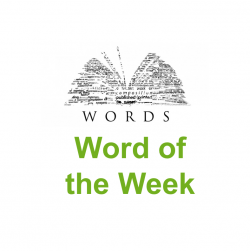Tom Robinson case in ‘To Kill a Mockingbird’
As part of ‘Flair Week’ law A level students were invited to carry out some independent work on an area of their choice. Jesse Harry-Brown read the novel ‘To Kill a Mockingbird’...
Filter by Category
Filter by Author


























































































































































































As part of ‘Flair Week’ law A level students were invited to carry out some independent work on an area of their choice. Jesse Harry-Brown read the novel ‘To Kill a Mockingbird’...
Posted by Stephanie Knowles

Posted by James Felix

Posted by Danielle Bowe

Law students took part in a wide programme of activities this week during ‘Flair Week’. Students were invited to challenge themselves with a piece of independent work and guests...
Posted by Stephanie Knowles

Web Design in Year 8 Hello. My name is Yash Mehta and I am from 8 Beech. This term in Technology, I have been making a website about books. I found this topic really interesting...
Posted by Alison Hanbury

This week one of our year 10 students, Bharruni has taught a lesson to three year 10 science groups. Bharruni is completing an award programme run by an organisation called ‘Medic...
Posted by Helen Booth

I wanted one of my lovely Year 7 students to share an article about the day she spent at Aldenham Farm. Our students have amazing opportunities at Bushey Meads to be involved in a...
Posted by Roa Dillon

Happy Francophone Week! Did you know that French is the second most studied language in the world, with some 125 million students and 900,000 teachers of French abroad? It is...
Posted by Hilarie Charles

Apprenticeship Webinar – Operating Department Practitioner (ODP) Thursday 01 April 2021 @ 3pm to 4pm Register on Eventbrite at: https://bit.ly/3vR50ey Earn and learn with your...
Posted by Di Mcildowie

Posted by Danielle Bowe
 As part of ‘Flair Week’ law A level students were invited to carry out some independent work on an area of their choice. Jesse Harry-Brown read the novel ‘To Kill a Mockingbird’ and used this as a springboard to analyse the importance of racial balance on juries and the impact that racial bias can have on a legal system. He writes:
As part of ‘Flair Week’ law A level students were invited to carry out some independent work on an area of their choice. Jesse Harry-Brown read the novel ‘To Kill a Mockingbird’ and used this as a springboard to analyse the importance of racial balance on juries and the impact that racial bias can have on a legal system. He writes:
Tom Robinson case in ‘To Kill a Mockingbird’
By Jesse Harry-Brown (12A)
To Kill a Mockingbird is a novel by Harper Lee. Written in 1960 and set in the mid-1930s in the  small town of Maycomb, Alabama, it is essentially about a young white girl growing up in Southern America and realizing the harsh reality of the country she was living in. Scout looks back on her childhood and tells us a story about how a black man in her county was given an unfair trial. This document will comment on the importance of having a representative jury in order for people of all backgrounds to access a fair trial. In the UK, everybody has the right to fair trial. A fair trial means you have the right to a hearing which is: fair, public, heard by an independent and impartial court or tribunal and heard within a reasonable time.
small town of Maycomb, Alabama, it is essentially about a young white girl growing up in Southern America and realizing the harsh reality of the country she was living in. Scout looks back on her childhood and tells us a story about how a black man in her county was given an unfair trial. This document will comment on the importance of having a representative jury in order for people of all backgrounds to access a fair trial. In the UK, everybody has the right to fair trial. A fair trial means you have the right to a hearing which is: fair, public, heard by an independent and impartial court or tribunal and heard within a reasonable time.
 Atticus (Scout’s Father) is asked to defend Tom Robinson, a black man wrongly accused of raping a white woman. Atticus takes on the case even though he, and everyone in the community knows he has little hope of winning. Although he also knew he had little chance of winning the case he took it as he believed it was morally right to do so: his sense of justice and equal rights outweigh any reservations he felt. The reader sees the trial develop through the childlike eyes of Scout, as gradually both she and her brother learn some valuable life lessons from their father about tolerance, empathy and understanding.
Atticus (Scout’s Father) is asked to defend Tom Robinson, a black man wrongly accused of raping a white woman. Atticus takes on the case even though he, and everyone in the community knows he has little hope of winning. Although he also knew he had little chance of winning the case he took it as he believed it was morally right to do so: his sense of justice and equal rights outweigh any reservations he felt. The reader sees the trial develop through the childlike eyes of Scout, as gradually both she and her brother learn some valuable life lessons from their father about tolerance, empathy and understanding.
During the trial Atticus presents to the court numerous reasons why it was not possible for Tom Robinson to have raped Mayella Ewell, the victim. Through the evidence, the reader and clearly all in the courtroom are aware of Tom’s innocence and it is actually made clear that the accusation stemmed from the victim’s own prejudice. With this said the jury still decided that Tom Robinson was guilty. After being sent back to jail, Robinson tried to escape but in doing so was caught and killed. This could have been prevented if the correct verdict was given. This leads us to the question of why the correct verdict was not given. There are many reasons for this, but the main one that stands out is the biased jury selection.
It is brought to our attention, as readers, that the jury was all white males. Women and people of colour were not allowed to be a member of the jury. Although the book was written in 1960 it was set in the USA in 1929. In the UK, women were only allowed to sit as members of the jury in 1921 although it was extremely rare to see a woman sat. In the US, women were allowed to sit as early as 1898, but this only became common in the 1930s. Traditionally in the UK, juries were made up of landowners, and therefore were generally well-off, white males. People of ethnic minorities in the UK were never specifically disqualified from sitting on a jury. In the US, in 1880 the Supreme Court held that it was against the 14th Amendment to exclude American Black Africans from jury service. However, 2004, the Mississippi Supreme Court recognised that “racially motivated jury selection is still prevalent”. Harper Lee’s jury in her novel is therefore a true reflection of the likely composition of a jury not only in 1929 but even in 1960. This lack of diversity in the jury, clearly did not work in Robinson’s favour as everyone on the jury, although knowing the truth, voted in favour of the white man. However, it was not only a lack of diversity that led to the verdict. The jurors all had a choice whether or not to vote innocent or guilty but they knew that supporting a black man could have them being hated on by people of the town. Atticus in this sense was different as he didn’t care what people thought about what he was doing.
This happened in many other cases during the 20th century and although this has now improved there is still a racial bias not only in the US but also in the UK judicial system today. An example of this is Sander v UK (2000). In this case, an Asian man accused of fraud was denied a fair trial when the judge refused to discharge the jury after a juror admitted making racist jokes. In the UK, we pride ourselves as being more tolerant and certainly less overtly racist than the US. UK readers may (wrongly) believe that the trial portrayed in the novel would not have happened in 1929 UK, or 1960 UK or even 2021 UK. However, there is still a lot of institutionalised racism in the country and the case of Sander illustrates this.
 David Lammy, MP, carried out a research which was released in 2017: “My conclusion is that BAME individuals still face bias, including overt discrimination, in parts of the justice system,”. His findings provide facts that people from minority ethnic backgrounds always argued and have for decades. The MP highlighted the fact that there was “greater disproportionality” in the number of black people in prisons in England and Wales than in the US. Black people make up 3% of the population in England and Wales and 12% of the prison population, compared with 13% and 35% respectively, in the US. He also found that for every 100 white men convicted of public order offences, there were 494 BAME convictions. This is surprising as BAME people are quite a small part of the UK population. In fact, they only make up about 14% of the population but 25% off the prison population.
David Lammy, MP, carried out a research which was released in 2017: “My conclusion is that BAME individuals still face bias, including overt discrimination, in parts of the justice system,”. His findings provide facts that people from minority ethnic backgrounds always argued and have for decades. The MP highlighted the fact that there was “greater disproportionality” in the number of black people in prisons in England and Wales than in the US. Black people make up 3% of the population in England and Wales and 12% of the prison population, compared with 13% and 35% respectively, in the US. He also found that for every 100 white men convicted of public order offences, there were 494 BAME convictions. This is surprising as BAME people are quite a small part of the UK population. In fact, they only make up about 14% of the population but 25% off the prison population.
In conclusion, despite the huge differences between the world of the novel ‘To Kill a Mockingbird’ compared to the UK today, racial injustice is prevalent in both worlds. Although there certainly has been masses of change and there have been improvements in relation to racial equality, much more needs to be done to eliminate racial inequality in our legal system.

Flair week saw a range of different activities in the Humanities and Social Sciences faculty, we saw many students enthusiastically take part and show off their abilities and...

After an eight week period of physical distance, Year 12 students were able to enjoy their first face-to-face lesson with their humanities and social sciences teachers last week. ...